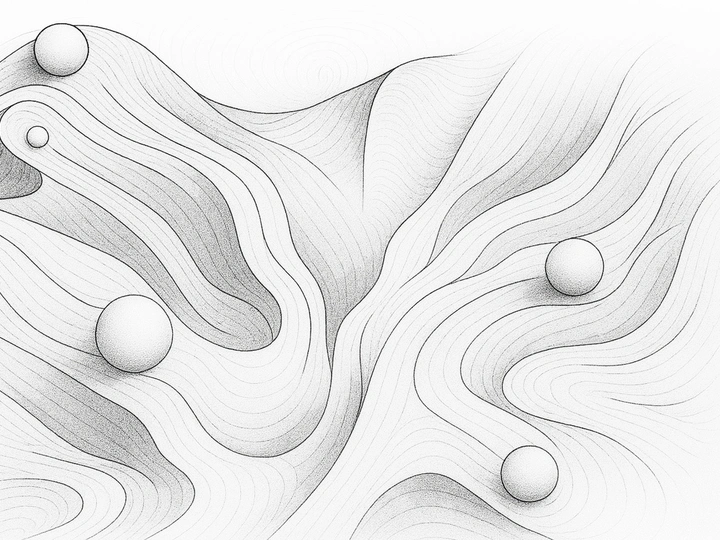Topologies of Exhaustion:Architecture after Effort

I am a PhD candidate at the School of Architecture of the National Technical University of Athens (NTUA), and a scholar of the Hellenic Foundation for Research and Innovation, a highly competitive national funding scheme. My doctoral thesis, ‘The Epigenetics of Architectural Form’, draws on genetics, epigenetics, and epiphylogenetics to compose a theory of evolution of architectural knowledge. I hold a Diploma (integrated master) in architectural engineering and an MSc in architectural research (NTUA). I am also a licensed member of the Technical Chamber of Greece with experience across a range of project scales and participations in architectural competitions (one awarded a purchase).
Between 2017 and 2022, I worked as a teaching assistant at NTUA for core undergraduate design studios. Since 2023, I have been a guest researcher at TU Delft’s Faculty of Architecture and the Built Environment, part of the Architecture Philosophy and Theory (APT) group, contributing to postgraduate education as tutor. My academic involvement expands beyond teaching into editorial and collaborative research roles. I am currently a member of the editorial board of Footprint: Delft Architecture Theory Journal and layout editor for the Ecologies of Architecture Book Series, both part of TU Delft Open Publishing. I also contribute to the Erasmus+ funded educational project Speculative Urban Futures (SUrF).
My research has been presented in multiple international conferences (AHRA, D&G, New Materialisms, Ambiances, among others). My peer-reviewed publications include ‘Cuckoo’ in Footprint 36 (2025), ‘On Tectonic Naivety’ in Noetics without a Mind (2024), and ‘The Heterotopia of an Apple: Error as a Methodological Tool in Architectural Synthesis’ in Research by Design, Vol. 4 (2021) - NTUA’s selection of distinguished theses. This October, I will join a roundtable discussion on Intelligence and Transdisciplinarity at the Venice Architecture Biennale.
It is a common sin to collapse architectural form into the terminal image of an object; a common sin to reduce invention to the heat-death of imagination. But what if architectural form is not an imagistic composable, but the compost: a value-laden field shaped by distributed effort? What if exhaustion is not a dead end, but the condition of invention? And what if imagination, instead of burning itself out in the cut between being and nonbeing, sharpens into a sensorium attuned to differentials that persist at the edge of collapse, not yet committed to any form?
No beginning escapes the proximity to dissolution. What begins begins already at the edge of its own undoing, held by continuous, peril-ridden expenditure of effort. In the asymmetry between an effort forever-spent and the abrasive reversibility of its material product, a surplus of relations folds. Informational excess adheres to any actualised form as a unilateral charge that conditions the field of possible rebeginnings. There are no points of origin, only situated incisions into an already-charged field. Form, then, is neither an efficient cause nor a point of arrival for any linear process. Rather, it is a residue of irreversible work; a topology of gradients spent in the act of holding together.
In an era of epistemic fatigue, where platforms drown in formalistic glut and architectural practice grasps at design codes or arbitrary narratives to legitimise its existence, 'Architecture after Effort' reorients from essentialism to intensities, from object-images to spent gradients, from archives of fatigue that drain the possible to topologies of exhaustion that feed the impossible. It posits architecture within a charged terrain where Ruyerian effort, Simondonian transduction, and Deleuzian fatigue intersect non-equilibrium thermodynamics; where failed attempts and spent forms still imagine the yet-to-come; and where irreversibility works as anti-hylomorphic catalyst for speculative trajectories.